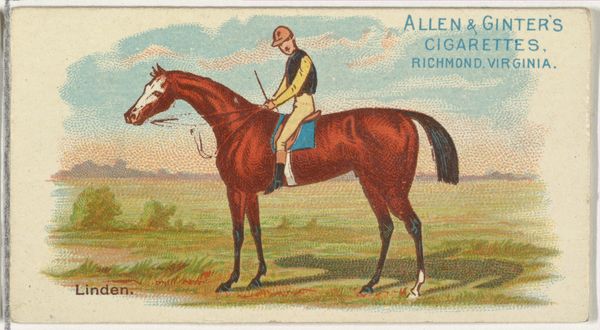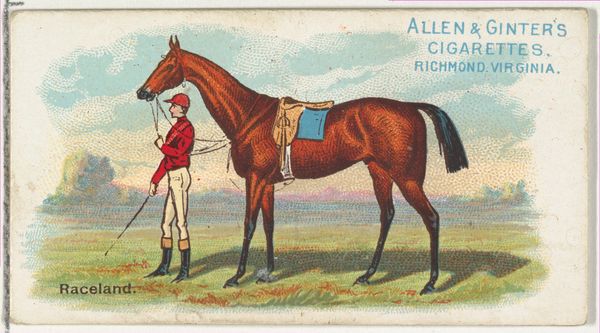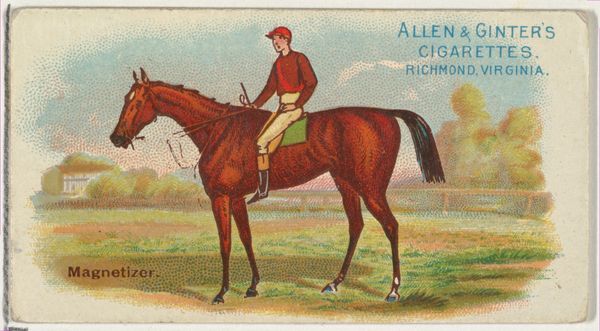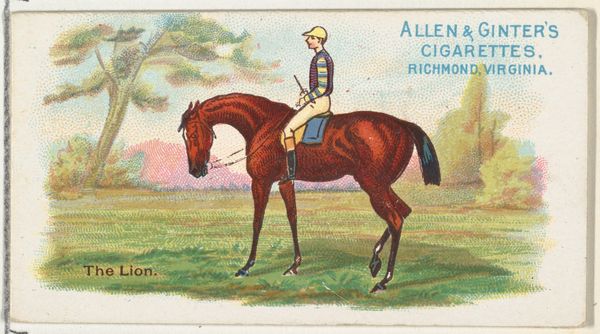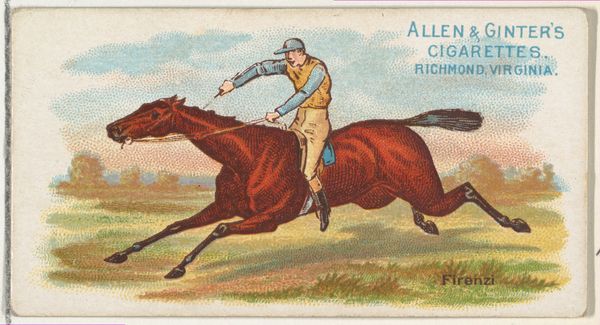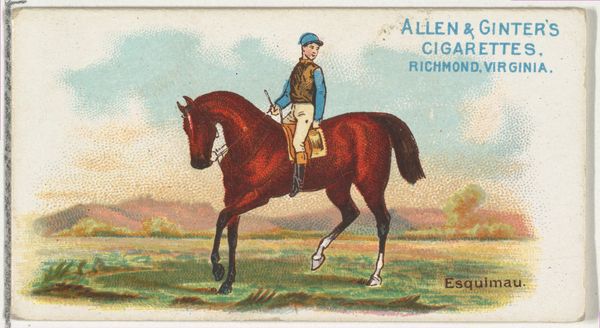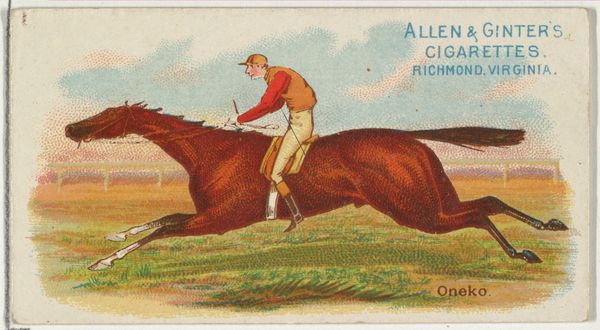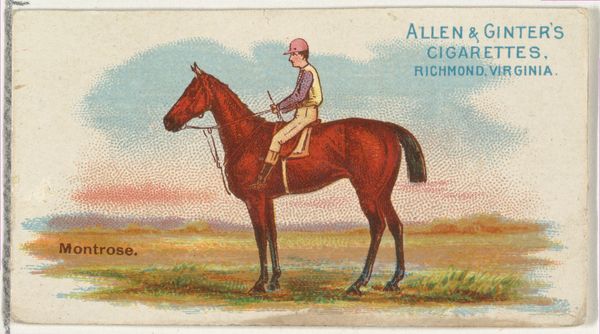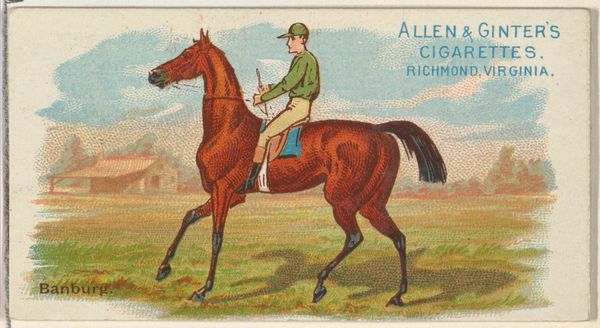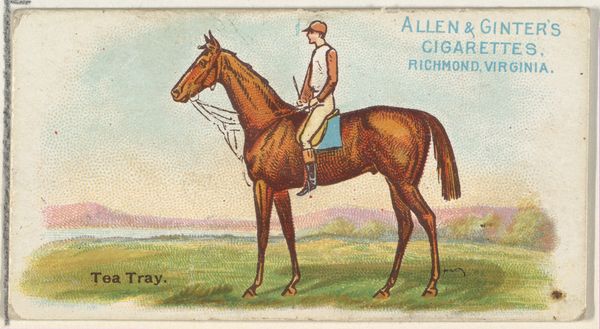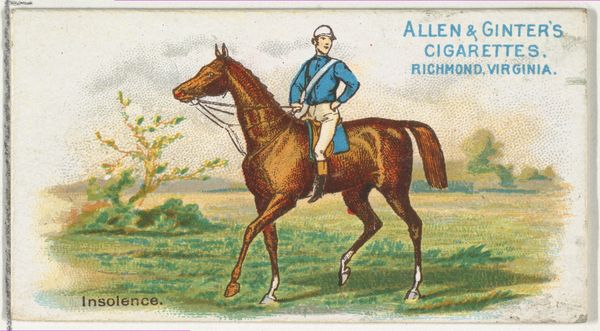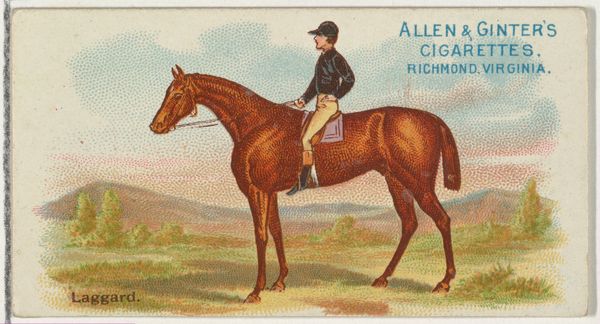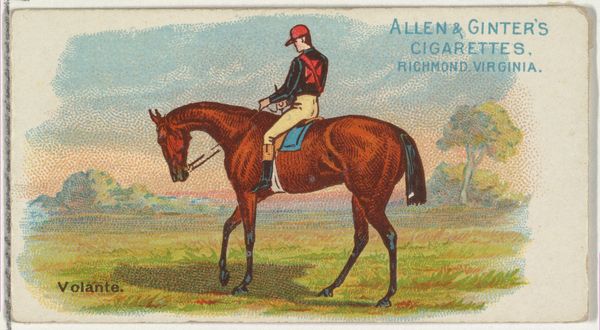
Emperor Norfolk, from The World's Racers series (N32) for Allen & Ginter Cigarettes 1888
0:00
0:00
drawing, coloured-pencil, print
#
portrait
#
drawing
#
coloured-pencil
# print
#
impressionism
#
caricature
#
landscape
#
caricature
#
coloured pencil
#
horse
#
men
Dimensions: Sheet: 1 1/2 x 2 3/4 in. (3.8 x 7 cm)
Copyright: Public Domain
Curator: Here we have "Emperor Norfolk, from The World's Racers series," dating back to 1888. It was created for Allen & Ginter Cigarettes using colored pencil and printmaking techniques. Editor: It strikes me immediately as delightfully peculiar. The rendering is quite flat, yet there's a real dynamism in the horse's pose and the landscape behind it. A curious mix. Curator: Indeed. Allen & Ginter used imagery like this on their cigarette cards to capture popular cultural icons. Racehorses were symbols of power, wealth, and leisure. The "Emperor" moniker carries historical weight, connecting equine prowess to notions of imperial dominance and prestige. Editor: The visual language seems pulled in multiple directions. On one hand, the crisp lines and defined shapes offer a semiotic clarity; we understand it's a horse, a rider, a field. Yet, there’s an element of caricature that disrupts any pure representational reading. Is it meant to satirize the aristocratic connection to horse racing, perhaps? Curator: It is entirely possible. While intended to promote an association with luxury and the upper classes, the artists occasionally adopted modes of portrayal that playfully deflated any self-serious readings. It perhaps spoke to a broad audience, including those less connected to those elites. The red cap, saddle blanket and sash serve as markers of symbolic value—status and virility translated into a visually arresting code. Editor: It is like a collection of visual cues, each triggering a cascade of associations. The horse becomes a signifier not just of itself, but of an entire social milieu, condensed onto this tiny rectangle. Curator: Exactly. What this work reminds me of is how images operate in our cultural memory. Allen & Ginter tapped into very specific desires and aspirations of the late 19th-century consumer, using easily accessible symbols of class. The continuity is seeing these symbols still operate with potency today, albeit with different resonances. Editor: I see it now as a successful conflation of formal simplicity and social messaging, using available resources and cultural expectations. I now better appreciate how a tiny card can unpack so much. Curator: And it underscores how something ostensibly trivial like a cigarette card is capable of capturing complex social meanings of the era.
Comments
No comments
Be the first to comment and join the conversation on the ultimate creative platform.
